The sulphur-crested cockatoo is one of the largest of the several species of beautiful white cockatoos. It is a different species than the lesser sulphur-crested cockatoo. Although spectacular in appearance, this huge, active parrot is brilliant, long-lived, and noisy; and it is very challenging to keep as a pet. This bird expects a lot from its owner and it is recommended only for experienced owners who are up to the task. For a motivated owner, the sulphur-crested is a once-in-a-lifetime pet.
Breed Overview
Common Names: Sulphur-crested cockatoo, greater sulphur-crested cockatoo
Scientific Name: Cacatua galerita
Adult Size: The largest subspecies (C. g. galerita) can reach an adult size of about 20 inches, weighing nearly two pounds
Life Expectancy: Up to 80 years in captivity with proper care
Origin and History
Sulphur-crested cockatoos are native to eastern Australia, New Guinea, Indonesia, and New Zealand. Their preferred habitat is along the edges of tropical and subtropical rainforests. They are also a familiar sight in urban areas. In some parts of Australia, this bird is so plentiful that people consider it a nuisance. The Wild Bird Conservation Act prohibits the import of sulphur-crested cockatoos to the United States, so most pet birds now are captive-bred.
There are four subspecies, hailing from different geographic locations with slightly different physical characteristics:
- Cacatua galerita triton: Called the Triton cockatoo, comes from New Guinea and the surrounding islands
- C. g. eleonora: Eleonora cockatoo, comes from some of the eastern Indonesian islands
- C. g. fitzroyi: Mathews cockatoo, comes from northern Australia
- C. g. galerita: Standard sulfur-crested cockatoo, comes from eastern Australia. This is the most common subspecies.
The lesser sulphur-crested cockatoo looks similar to the (greater) sulphur-crested cockatoo, occupies a different geographic range, and is not a typical pet bird.
Temperament
Cockatoos are an affectionate species among the various types of parrots; the sulphur-crested is typical in this regard. You must be willing to devote the time and energy to form a strong bond with a bird. A sulphur-crested cockatoo loves to be handled but also needs enough alone time to learn self-sufficiency, which is no small feat.
This bird is a more emotionally complicated pet species than other cockatoos and is prone to sudden, unpredictable movements that can be startling, although the intent is rarely aggressive. This demanding bird can become self-abusive and destructive if it does not get the attention it needs.
They are considered one of the most intelligent parrots. They have the learning capacity of a 1- to 2-year-old human child and can learn to talk and do tricks. Young birds will be easiest to train and socialize.
Speech and Vocalizations
These birds are excellent mimics and can quickly learn to speak words and phrases. The sulphur-crested cockatoo also has a piercingly loud shriek. This species is not well-suited to apartment living as its noisiness can be considered a nuisance to close neighbors.
Sulphur-Crested Cockatoo Colors and Markings
Sulphur-crested cockatoos are primarily white with black beaks. They sport a beautiful crest of yellow feathers on top of their heads. It has a yellow wash on the underside of its wings.
The sexes look similar, although the female can be distinguished at close range by its reddish-brown eye. The male's eyes are darker brown or black. This distinction does not become apparent until the bird has reached maturity, which varies between 3 to 5 years of age.
Caring for the Sulphur-Crested Cockatoo
Sulphur-crested cockatoos are large birds that need very spacious enclosures. At a minimum, the cage should have a footprint of about 40 inches by 40 inches and at least 5 feet tall. A bigger cage is better, and best of all is an aviary environment.
The birds naturally emit a downy powder, which aids in keeping their wings and skin healthy. This powder may be problematic for some people with allergies.
Bird bathing is strictly an individual preference. In the wild, some cockatoos enjoy standing in the rain while others avoid it.
Common Health Issues
The health issues affecting sulphur-crested cockatoos are similar to those for other cockatoos and parrots of the same size. This bird is especially prone to rebellious behavior problems if it does not get attention and adequate exercise and mental stimulation. They may start feather plucking and destructive chewing. To avoid these unwanted behaviors, owners must be diligent about providing their pets with plenty of toys and attention.
Like other parrots, sulphur-crested cockatoos are prone to fatty tumors if their diets do not include enough fresh vegetables and fruit. This species is also susceptible to psittacine beak and feather disease (PBFD), a viral condition.
Diet and Nutrition
In the wild, sulphur-crested cockatoos feast on seeds, grain, and insects that they harvest from trees. In captivity, they need a varied diet that includes high-quality pellets and fresh fruits and vegetables.
Experienced owners of sulphur-crested cockatoos take great care in preparing their birds' diets, as cockatoos can quickly suffer from the effects of poor nutrition.
A well-formulated, high-quality parrot pellet should account for 75 percent of its dietary needs. The remaining 25 percent should be fresh fruits and vegetables. Start by offering your bird 1/4 cup of pellets and 1/4 cup of fruits daily. Increase the amount as needed. Nuts and seeds can be given sparingly as training treats.
Exercise
The sulphur-crested cockatoo is a highly active and lively bird that requires plenty of exercise to maintain proper health. Owners of sulphur-crested cockatoos should allow their pets a minimum of 3 to 4 hours of outside-the-cage playtime every day.
Provide the bird plenty of space to climb, stretch, and flap its wings. Most cockatoo owners provide their birds with play stands or special perches for their exercise needs.
Give your cockatoo plenty of interactive toys that can be chewed, grasped, and climbed. Cockatoos have one of the most powerful beaks in the parrot world, expect to give them durable toys. Birds get tired of the same toys every day, plan to rotate them in and out to keep your bird interested and distracted from unwanted behaviors like chewing on your wooden furniture.
Social, affectionate, likes handling
Intelligent, can learn to talk and do tricks
Long-lived species
Can be noisy, not well-suited for apartments
Needy, requires at least 3 to 4 hours of supervised out-of-cage time
Emits a powdery dust that can aggravate allergies
Where to Adopt or Buy the Sulphur-Crested Cockatoo
Purchase sulphur-crested cockatoos from a reputable breeder. Expect to pay from $2,000 to $4,000, depending on the reputation of the breeder, the bird's tameness, and age. Do your homework, and if possible, spend time with a sulphur-crested cockatoo in a home environment to develop a sense of what it takes to be an adequate owner.
You can also rescue sulphur-crested cockatoos regularly abandoned by owners who are not up to the challenge. Some online sources where you can find sulphur-crested cockatoos include:
- Rescue the Birds
- Adopt a Pet
- Beauty of Birds
Make sure that the bird you want to take home is alert, active, and exhibits all the signs of a healthy bird, such as bright eyes, clean feathers, and full crops.
More Pet Bird Species and Further Research
Other similar pet bird species you might want to consider include:
- Citron Cockatoo Species Profile
- Umbrella cockatoo Species Profile
- Moluccan Cockatoo Species Profile
Otherwise, take a look at more species in the cockatoo family.
Related Article
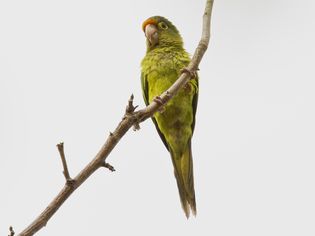
Half-Moon Conure Species Profile
The Half-moon conure is a medium-sized dwarf parrots species that is known for its excitable person
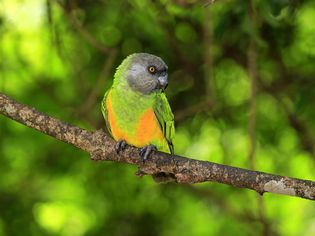
Senegal Parrot: Bird Species Profile
The colorful and relatively small Senegal is remarkably quiet and calm. It can talk and mimic, alth
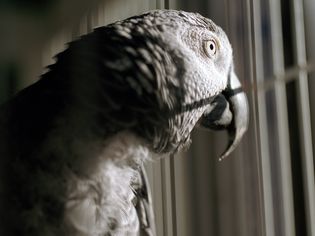
Helping Your Depressed Pet Bird
Depression in pet birds is more common than you might think. Check for the signs that mean your bir

Parrot Nutrition 101
An imbalanced or incomplete diet is a common problem with pet birds and is a relatively common caus

Causes of Regurgitation in Birds
It's a scenario that is all too familiar for some pet bird owners—you are sitting with your b
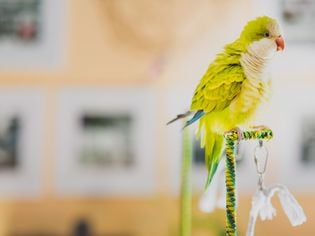
Are Essential Oils Safe for Birds?
Essential oils are becoming more and more popular as a way to do everything from ease anxiety to tr
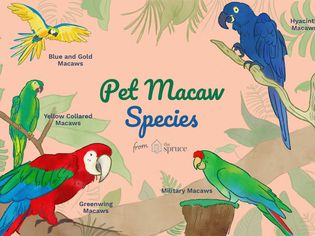
Popular Macaws That Make Outstanding Pets
One of the most prized pet birds, there are 17 different types of macaws, each with its own unique

Plants That Are Safe for Pet Birds
The houseplants we use to brighten our homes aren't always safe for those who have pet birds, a
About WhiskerClub
We are a premier digital platform committed to delivering high-quality content to our readers. Our mission is to provide accurate, reliable, and engaging information that adds value to our audience's daily lives.
Our team consists of experienced content creators and subject matter experts who uphold the highest standards of professionalism. In an era of information overload, we curate content with care, ensuring our users receive only the most relevant and trustworthy information.
Beyond just reporting facts, we focus on depth and context. Through expert analysis, comprehensive research, and clear presentation, we help our audience gain meaningful insights and make informed decisions.
We take pride in being a trusted information source for our growing community of readers. Our user-first approach means we continuously adapt to provide content that meets our audience's evolving needs and interests.
Innovation and excellence drive everything we do. We're committed to improving our platform and services to deliver the best possible experience for our users.


Comments on " Sulphur-Crested (Greater) Cockatoo: Bird Species Profile" :